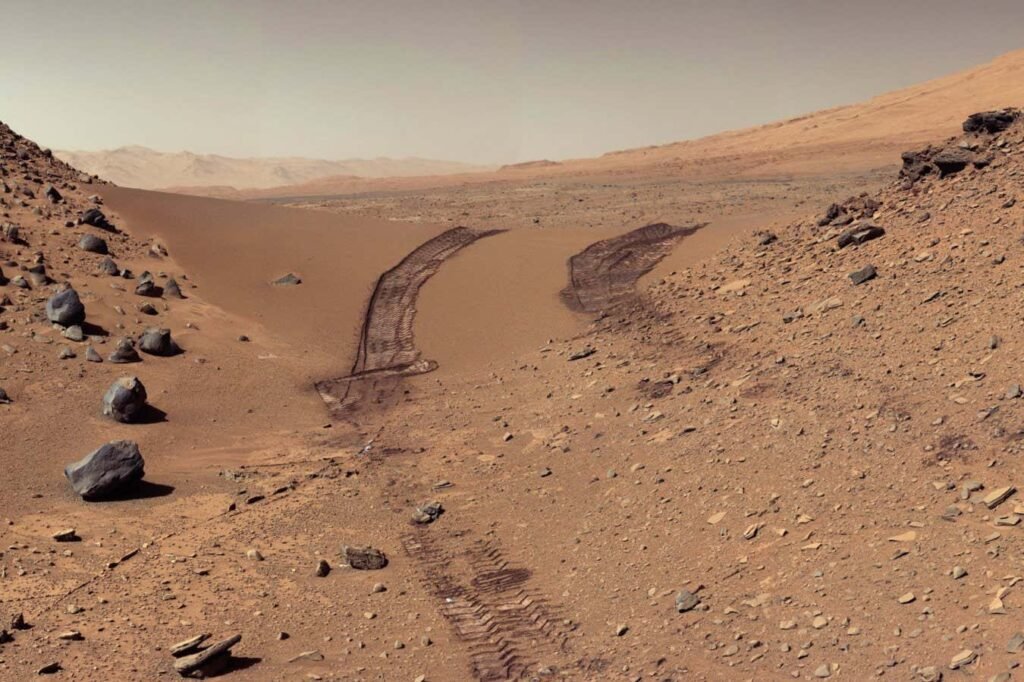
Dingo Gap in Gale Crater
NASA/JPL-CALTECH/MSSS
From HG Wells’ Alien Invaders War of the Worlds to Martianabandoned astronaut, we have long been inspired by the idea that life could exist on Mars – human or otherwise. The flyby, orbiter, and lander, including NASA’s Perseverance rover and its airborne companion Ingenuity, have made Mars one of the best-understood planets in our solar system. Now, more than ever, we are closer to answering the question: Can it live there?

An impact crater in Meridiani Planum
NASA/JPL-Caltech/University of Arizona

Mars surface temperature
NASA/JPL-Caltech/Arizona State University
A new book Mars: NASA archive photosit celebrates missions that have enriched our understanding from Mars and looks to a future where humans explore the Red Planet.

Perseverance photographs the parachute used to slow the landing
NASA/JPL-Caltech
Above image, main photo: Gale Crater’s Dingo Gap, traversed by NASA’s Curiosity rover; An impact crater in Meridiani Planum, captured by the Mars Reconnaissance Orbiter’s High Resolution Imaging Science Experiment camera; Mars surface temperature, cool blue to warm red, captured by the Thermal Emission Imaging System of the Mars Odyssey spacecraft; Perseverance photographs the parachute used to slow the landing; A rocket-powered stage lowers Perseverance to Mars in a “sky crane” maneuver.

Perseverance rover, before landing in the Jezero crater
NASA/JPL-Caltech

Topics:

